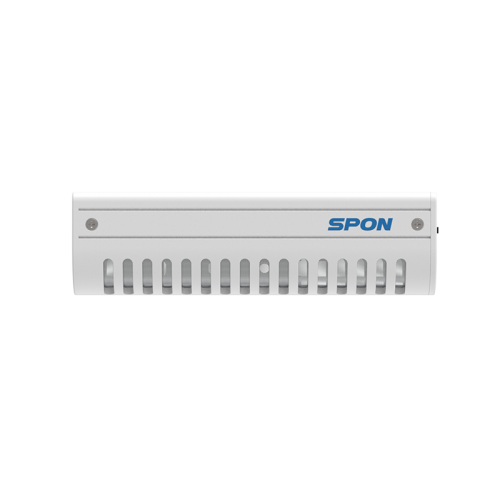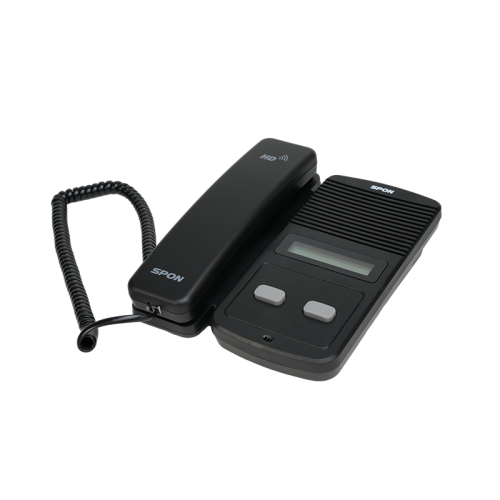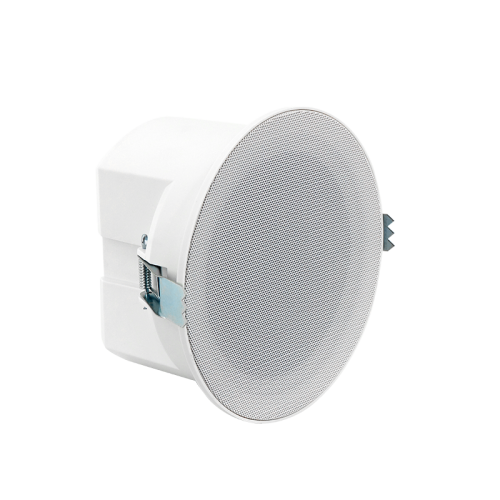Why an IP Paging System is Vital for Modern Companies
Why an IP Paging System is Vital for Modern Companies
Blog Article
Comprehensive Guide to Public Address Systems
Public address (PA) systems are frequently encountered in numerous projects such as office complex, property facilities, industrial office buildings, institutions, hospitals, train terminals, airport terminals, bus financial institutions, manufacturing facilities, and stations. This guide will certainly give a comprehensive introduction of PA systems.
Components of a PA System
Regardless of the kind of PA system, it usually consists of four main parts: resource tools, signal boosting and handling devices, transmission lines, and audio speaker systems.
Resource Equipment
Music Players: Used for background music.
Microphones: Includes common microphones and zone-select microphones.
Voice Storage Gadgets: For keeping service and emergency broadcast messages.
Signal Processing and Amplification Equipment
Audio Signal Processor: Deals with audio signal payment, depletion, equalization, etc.
Pre-Amplifier: Pre-amplifies sound signals.
Power Amplifier: Enhances audio signals to drive speakers, offering continuous voltage outcome.
Transmission Lines
The service administration platform software permits the tracking center to put in centralized governance over the broadcast and intercom communication systems. It promotes online tool standing surveillance, mistake medical diagnosis, and troubleshooting, solidifying system reliability and consistency.
Speakers
Ceiling Audio Speakers: Indoor, flush-mounted in the ceiling, consistent voltage or consistent resistance.
Wall-Mounted Speakers: Wall-mounted, constant voltage or consistent insusceptibility.
Column Speakers: Free-standing, ideal for outdoor or interior use.
Horn Speakers: High level of sensitivity, ideal for exterior or interior use.
Camouflaged Speakers: For exterior settings like parks or yards, developed to look like rocks, mushrooms, or stumps.
Sound Technical Specs of PA Equipments
In daily settings, normal sound stress levels are:.
Workplace noise: 50-60 dB.
Regular conversation: 65-70 dB.
Textile manufacturing facility noise: 110-120 dB.
Little caliber shooting: 130-140 dB.
Large jet airplane noise: 150-160 dB
Signal-to-Noise Proportion (SNR)
SNR measures the proportion of the signal voltage to noise voltage, revealed in decibels. A higher SNR shows much less noise and much better audio high quality. Generally, SNR should be at the very least 63 dB, with high-fidelity audio speakers getting to over 110 dB.
Input Sensitivity
This is the minimal input voltage required to attain the rated result power. Higher level of sensitivity indicates less input signal is required. Generally, power amplifiers have an input level of sensitivity of 0.775 V (0 dB) to 1.5 V (+6 dB)
Maximum Result Power (Speakers)
The maximum power an audio speaker can deal with in brief bursts without damage.
Rated Power (Audio Speakers)
The continuous power an audio speaker can take care of without distortion, measured in watts (W) Ranked power is an ordinary value, and audio speakers can take care of peak power up to 2-3 times the rated power.

Consistent Voltage (70V or 100V)
Uses voltage to drive audio speakers, allowing longer transmission ranges and multiple audio speakers in parallel. Sound high quality is somewhat inferior contrasted to consistent impedance systems.
Power amplifiers should match the voltage rating of the speakers to avoid damages.
Continuous Impedance.
Utilizes current to drive speakers, giving much better audio top quality yet restricted transmission range (as much as 100 meters)
Insusceptibility matching is critical; for instance, an 8Ω amplifier must be matched with 8Ω audio speakers.
Choose and Configuring Speakers
Audio Speaker Option
Indoor Spaces with Ceiling: Use flush-mounted ceiling audio speakers without a rear cover.
Indoor Spaces with Only a Framework: Use ceiling audio speakers with back covers or hanging ball-type speakers.
Exterior Areas: Use weatherproof column audio speakers or horn speakers.
Parks and Gardens: Usage masked speakers designed for aesthetic purposes.
High-End Interiors: Usage classy dangling speakers.
Fire-Safe Areas: Use fireproof audio speakers with covered styles.
Speaker Arrangement
Speakers ought to be distributed uniformly across the solution location to make certain a signal-to-noise proportion of at the very least 15 dB. Common history sound degrees and recommended speaker positioning are:.
Premium office passages: 48-52 dB.
Huge shopping center: 58-63 dB.
Hectic road areas: 70-75 dB.
Speakers must be placed to guarantee an audio pressure level of 80-85 dB in the majority of settings. Ceiling speakers need to be spaced 5-8 meters apart, or 8-12 meters for background music only. For emergency broadcasts, make certain that no area is greater than 15 meters from the closest speaker.
Amplifier Sizing
Calculation Method:
For solution and business PA systems: P= K1 × K2 × ΣPo where:.
P = Total amplifier result power (W)
K1= Line loss settlement variable.
K2 = Aging aspect (1.2-1.4)
ΣPo = Overall power requirement.
For fire alarm system systems, use 1.5 times the complete variety of audio speakers.
Example Calculation:
For a background songs system with 10 audio speakers at 20W each: P= 1.26 × 1.2 × 10 × 20W × 0.7= 211W.
Last amplifier ability should be 1.3 times this value: 211W × 1.3= 274W
Installation Requirements
Audio Speaker Positioning
Speakers need to be equally and purposefully dispersed to meet coverage and audio high quality demands.
Power Supply
Small PA systems can utilize regular power electrical outlets, while systems over 500W need a devoted power supply. Power ought to be secure, with automated voltage regulators if necessary. The power supply must be 1.5-2 times the devices's power consumption.
Wire and Channel Installment
Usage copper-core cables for signal transmission. Wires must be shielded and transmitted with appropriate avenues, avoiding disturbance from electrical lines. Make certain appropriate separation in between power and signal lines.
Lightning Protection and Grounding
PA systems require appropriate grounding to avoid damages from lightning and electrical disturbance. Use devoted grounding for devices and ensure all basing measures satisfy safety requirements.
Installment High Quality
Cable and Port Top Quality
Use top notch cords and connectors. Make certain links are safe and correctly matched to prevent signal loss or disturbance.

Preserve appropriate stage positioning in between audio speakers. Use trusted techniques for connecting cables, such as soldering or terminal blocks, and safeguard links from environmental damages.
Grounding and Security Checks
Validate all grounding is properly mounted and check the safety and security of power connections and devices settings. Do thorough assessments before settling the installation.
Checking and Adjustment
Check the whole system to ensure all parts function correctly and satisfy layout requirements. Adjust settings as needed for ideal efficiency.
Craftsmanship Demands for Public Address Equipments
Construction Quality Requirements
The quality of building in a public address (PA) system job is important to fulfilling layout requirements and customer needs. It is essential to strictly comply with the design strategies, stick to requirements, prevent rework and delays, and maintain detailed construction logs. Key locations to concentrate on consist of:
Cord Choice and Installation
During the building of a PA system, attention is frequently concentrated on equipment, yet the selection of transmission cords is additionally essential for accomplishing adequate sound quality. High-quality broadcasting tools (amplifiers, audio speakers, etc) is necessary, yet the top quality of the transmission cable televisions also influences audio high quality.
Identical audio speaker cables have inherent capacitance in between the cables, which is not suitable for long-distance transmission as it can undermine high frequencies and create vague or muffled high audios. Twisted set cable televisions can effectively conquer this issue and needs to be utilized for long-distance transmission.
Shielded twisted set cables protect against electromagnetic disturbance and improve cable longevity, making them appropriate for long-distance installments. The diameter of the cables likewise influences performance. Thicker wires minimize transmission loss but boost cost and installation problem. The selection of cords should stabilize efficiency and cost, adhering to these standards:.
Usage well balanced links for all signal links in between PA system gadgets, with firm endpoints.
For systems with fire alarm features, make use of fire-resistant or flame-retardant copper-core wires.
Cable televisions must be transmitted through steel channels or wire trays, and should not share trays with lighting or power lines. Fire alarm system cable televisions need to have fire defense measures. The flexing span of wires should be no less than 15 times the cable television size, and power wires should be separated from signal and control wires. Verify cable lengths before setup and match them to the style illustrations, decreasing wire splices. When splicing is necessary, use specialized connectors and leave sufficient cord length at both ends with clear irreversible markings.
Attaching Speakers and Broadcast Lines
When connecting audio equipment, it's important to make certain phase uniformity in between audio speakers and broadcast lines. Phase disturbance in between speakers can cause substantial variants in sound pressure degrees, causing unequal sound circulation. Adhere purely to circuitry tags and standardized link techniques.
3 common link techniques in PA systems are:.
Turning Technique: Removing insulation from cords, turning them together, and securing them with tape or clamps. This technique is straightforward however may break down gradually.
Screw Terminal Technique: Removing insulation and placing cords into screw terminals, then tightening up the screws. This approach is frequently used.
Soldering Approach: Stripping insulation, turning wires, and soldering them with each other, then covering with tape. This technique is more appropriate and reliable for high-demand or damp environments.
No matter the approach, use tinned cord to help with soldering and avoid corrosion. Use PVC or metal channel to secure revealed cables from junction boxes to speakers.
System Grounding
The PA control area ought to have both functional and protective grounding. To lessen interference from the power system, different protective and operational groundings must be established. Recommended practice is to set up different copper strips for weak and strong electrical systems in their respective upright shafts. This guarantees optimum operation of the weak electrical system.
The overall grounding resistance ought to not go beyond 1Ω.
Building Assessment
Due to the intricacy of PA systems with many connections and components, comprehensive examination is required. General evaluations ought to include:
Safety checks of tools installment.
Verification of power line configurations.
Accuracy of links and terminations.
Special focus should be given to device settings, such as insusceptibility matching activate speakers. Verify that switches are established appropriately to avoid damage. Examine the outcome option activates signal resource devices, setups on signal handling equipment, amplifier linking switches, and power supply setups.
Once these actions are verified, get ready for tools debugging. Since debugging techniques vary based on details task requirements, they are not covered in information here.
Quality Records
Certificates, technical specs, and paperwork for speakers, enclosures, transformers, controllers, electrical outlets, amplifiers, audio handling equipment, secured cables, etc
Pre-installation, concealed assessment, self-inspection, and shared examination documents.
Records of style adjustments and final drawings (IP Paging System).
Quality inspection and assessment documents for channel and cable television installation
Records of system installation and debugging.
Significant Installation Demands
Tools Setup Order
Area regularly used tools like the primary program controller at the top for very easy access. For more facility systems with a 2.0-meter closet, position frequently used tools in between 0.8 to 1.5 meters for comfort.
Tools Connection Order
Connect the computer to the main broadcast controller. Audio lines usually attach straight to the input of the preamplifier or the initial channel of the mixer. The mixer results are dispersed to each amplifier, and if utilizing pure power amplifiers, link to the INPUT audio input. Amplifier outcomes then connect to addressable terminals, area control boxes, or area selectors, and ultimately to the speakers - IP PA System.
Circuitry Considerations

Power Supply
Make use of a specialized power sequencer for PA systems to make sure consistent power monitoring and consistent tool start-up sequences. The major power supply ought to include a ground line to protect devices and prevent static-related risks.
Devices Selection
Do not count entirely on look; take into consideration user testimonials and market track record. Products from reputable manufacturers with substantial screening and experience are typically more trusted.
Wireless Microphones
For cordless microphones, select UHF models for far better range and signal security. Choices consist of one-to-one, one-to-two, one-to-four, or one-to-eight setups (IP PA System). For mobile usage, choose headset microphones. Lavalier microphones might have poorer sound high quality and are susceptible to comments.
Link Wires
Usage solid connections for durability and stay clear of depending on adapters, which can create loosened connections over time. Correctly solder connections to ensure toughness and simplicity of upkeep.
Closet Setup
If utilizing deep power amplifiers, make certain the closet dimensions (e.g., 600x600mm) work with the equipment. Procedure cabinet depth and spacing before installment.
Appropriate preparation, high-quality tools, and precise installation and maintenance are key to attaining optimum sound quality and trustworthy efficiency in a PA system.
Generally, SNR needs to be at least 63 dB, with high-fidelity speakers reaching over 110 dB.
Speakers need to be positioned to make certain an audio pressure level of 80-85 dB in the majority of environments.When linking audio equipment, it's critical to ensure stage consistency in between audio speakers and broadcast lines. Stage disturbance between audio speakers can trigger significant variations in audio pressure degrees, leading IP Paging Microphone to uneven sound distribution. Amplifier outcomes then attach to addressable terminals, area control boxes, or zone selectors, and finally to the audio speakers.
Report this page